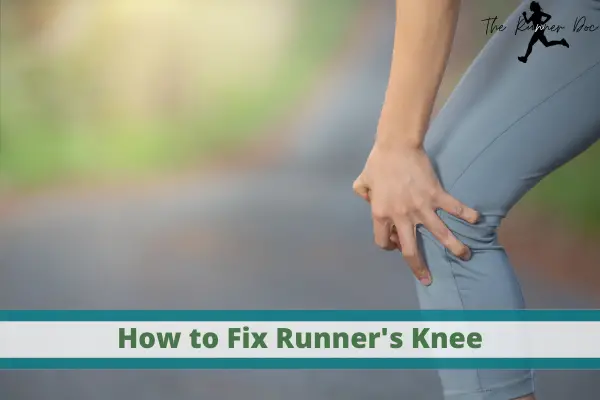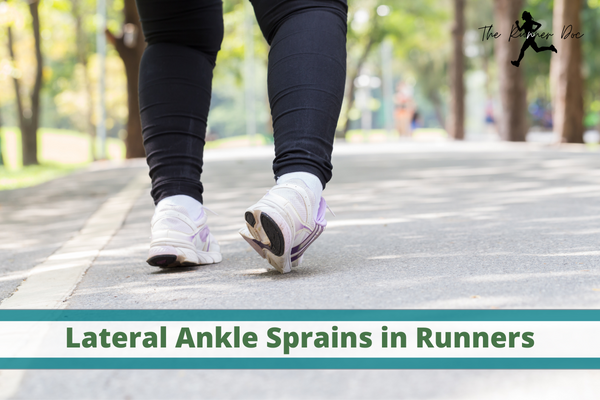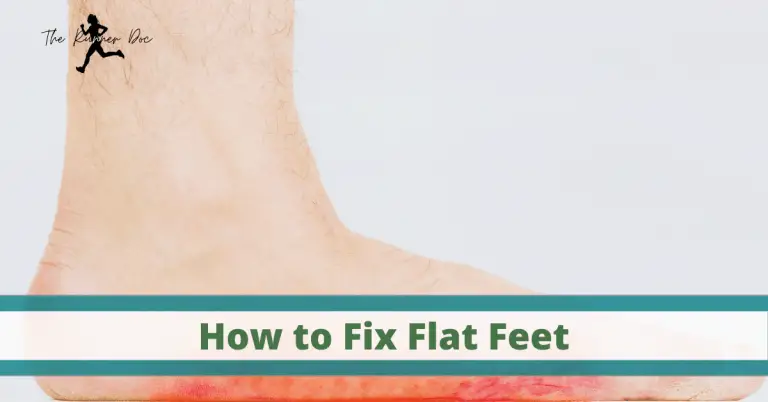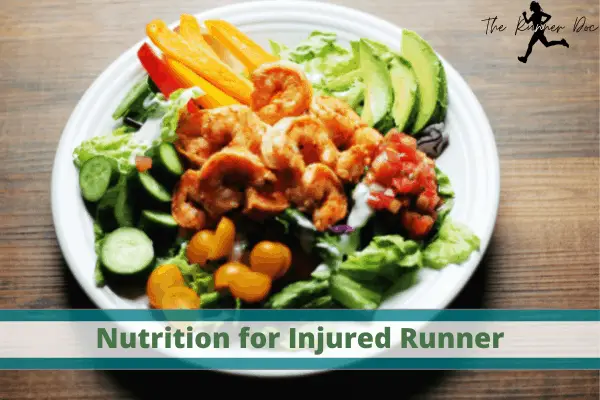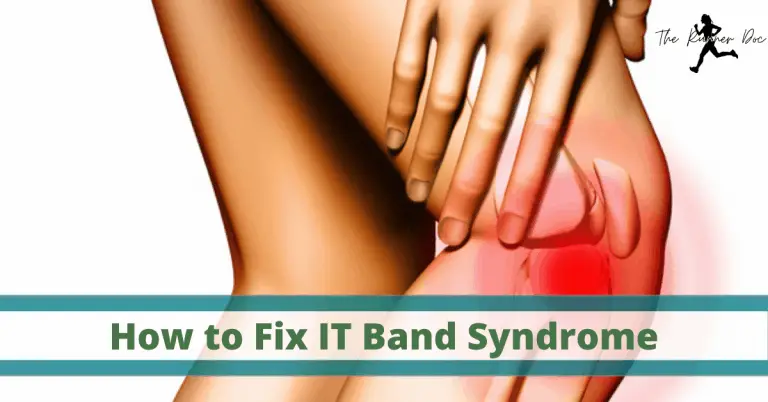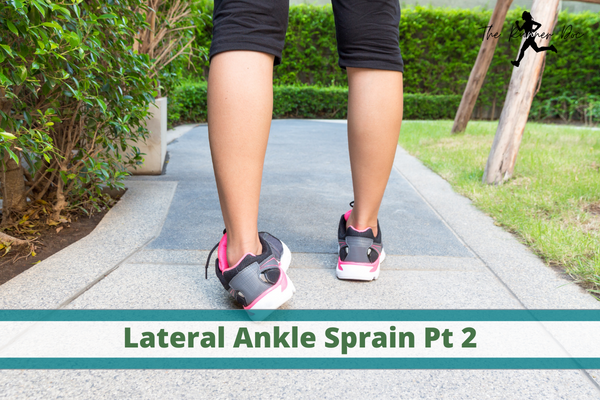How to Fix and Prevent Runner’s Knee
What is Runner’s Knee, or Patellofemoral Pain Syndrome, and How to Prevent it
Do you have pain in the front of your knee when running, when squatting, or going up and down the stairs?
You may be dealing with Runner’s Knee, also known as Patellofemoral Pain Syndrome (PFPS), which is pain at the front of your knee around your kneecap (patella).
Runner’s knee is the most common running injury according to a recent review. It has a prevalence of 19-30% in female runners and 13-25% in male runners. (PMID: 31728373) But how can we fix it or even better, prevent it from happening in the first place?
The good news is that some simple and routine exercises can help prevent and fix runner’s knee!
Anatomy of Runner’s Knee
Let’s start with a look at the anatomy of Runner’s Knee to figure out what is going on and how to fix it. The patellofemoral joint is the secondary joint within the knee complex (the primary being the femur and tibial plateau). It is formed by the trochlear groove of the femur and the patella. In addition, it involves the patellar tendon, many bursae, the infrapatellar fat pad, and the knee capsule with associated ligaments.
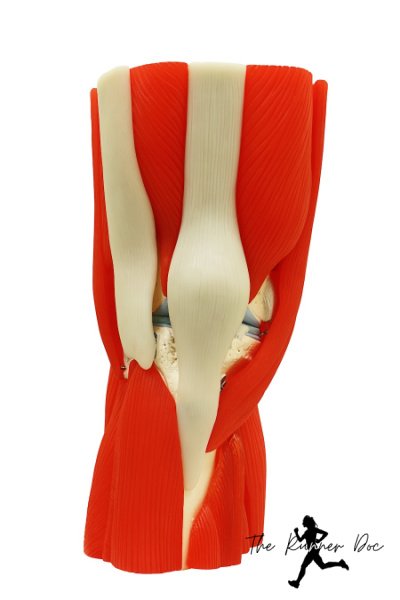
The thickest articular cartilage in the body can be found in the trochlear groove and patella lining. This cartilage is excellent at withstanding joint reaction forces. Pain-free or even dysfunction-free function is dependent on maintaining alignment of the joint.
What Causes Runner’s Knee
Overtraining can cause Runner’s Knee
I talk about overtraining in almost all of my injury-related articles. It is the most common culprit of injury and pain in runners. Why? Because our tissue can only take so much increase in stress without adequate rest before something detrimental happens.
Overtraining can cause fatigue and muscle imbalances, or increased stress on tendons/ligaments will cause microtears that result in injury and pain. Rest and recovery are essential to preventing injury and the same is true for patellofemoral pain syndrome. Make sure you are increasing your training appropriately and also allowing enough rest to let your body repair
Diminished hip muscle function causing knee valgus
Weakness in stabilizing muscles, particularly the hip abductors and hip external rotators have been key findings in PFPS sufferers. Research has also shown a link between biomechanical patterns such as knee valgus and hip internal rotation to Runner’s Knee.
Through several well-published studies, the consensus has been that diminished hip function and a resulting knee valgus position is a key factor to PFPS (Barton et al, 2012) (Noehren et al, 2012). Remember also, weakness is not always the culprit either in causing this movement pattern. It could easily be a lack of mobility in the ankle complex or tight/immobile hip adductors.
Overstriding when Running can cause Runner’s Knee
I have talked about overstriding when running in-depth in another article that you can find by clicking the link. However, as it pertains to Runner’s knee, overstriding causes you to be more likely to hyperextend your knee. This in turn puts excess stress and force on your patellofemoral joint and results in pain at the front of your knee.
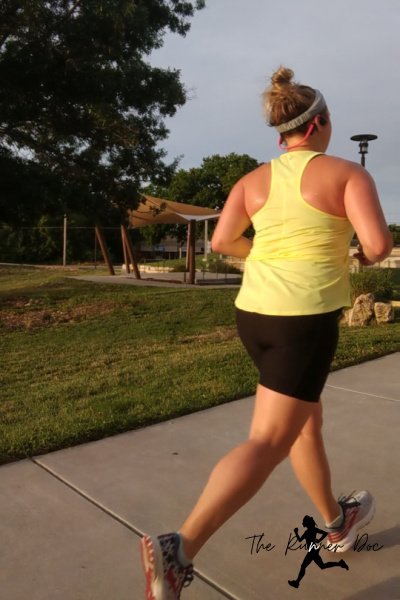
How to Know if You Have Runner’s Knee
Unlike other issues and injuries, Runner’s knee is a little different. Meaning, there isn’t a clear or obvious structural deformity as you see in a meniscus tear or arthritis. Getting an MRI or X-ray or any other imaging won’t help in diagnosing the issue.
Symptoms of Patellofemoral Pain Syndrom
Runner’s knee can manifest in multiple ways but the most commonly seen and felt is pain under and around the kneecap. It usually starts out as being fairly mild and felt only during running but can become progressively more intense and present between runs when not addressed.
Your first idea that something isn’t right is having lingering pain around the kneecap during or following a run. You might have pain that moves around to above, below or underneath the kneecap. The pain also might be fine on easy runs but become noticeable after hills or longer distances.
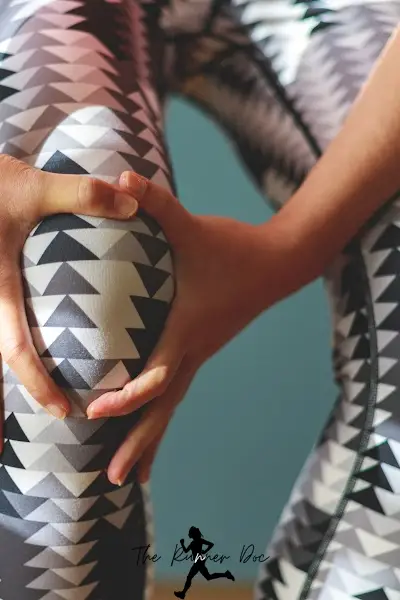
Typically the pain is diffuse and difficult to describe and pinpoint when asked. Even if you touch the area where you think the pain might be coming from you won’t really be able to feel anything more. Typically runners with patellofemoral pain syndrome will say that the pain is under the knee.
Some concurrent movements that increase pain or irritate the discomfort include squatting, sitting still for long periods of time, climbing stairs (or going down), and walking on hills.
Will Continuing to Run Make Runner’s Knee Worse?
With any overtraining injury, I always recommend you continue to run. Why? Because overtraining or repetitive use injuries are caused by too much stress on a structure. If we suddenly stop running and training our pain will obviously go away after time. But as soon as you start back up again you are increasing the stress on your knee and all your pain will come roaring back.
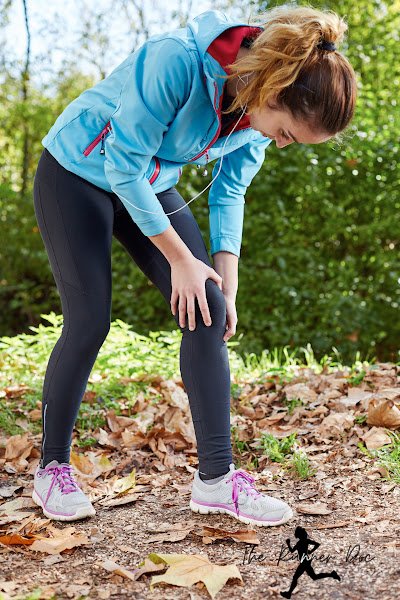
To offset this cycle of pain-rest-pain, keep running within a reasonable amount of pain. It will look different for everyone. If you can run for 1 minute and then walk for 3 minutes without your pain increasing to above a 3/10 then do that.
If you can run a mile and then rest for 5 minutes and repeat with less than 3/10 pain at the end then that is your guide. The two big things I don’t want to see are a change in how you are running due to the pain and for any pain to persist for more than 24 hours.
Rest may fix your pain but only through continuing to run can you develop the tissue durability needed to handle continued training to reach your goals.
How to Fix and Prevent Patellofemoral Pain Syndrome (Runner’s Knee) in Runners
Ask any physical therapist or orthopedic surgeon and you will, annoyingly, get different answers from them all. There are so many different schools of thought on treating it and even more answers and advice on the internet.
Unfortunately, mine might not be the best advice for you. That is why a good and thorough evaluation by a physical therapist is always recommended.
However, I do have tips that will help you prevent or help you at least rule things out. These things will make you a better runner and shouldn’t cause any other issues or make the issue worse.
Physical Therapy Exercises to Prevent and Fix Runner’s Knee
The focus of treatment is to alleviate pain and restore any biomechanical dysfunctions aggravating the joint complex.
The first priority is to control the symptoms to keep you running and have a good amount of load or stress placed on the joint with minimal pain. This helps the tissues develop and adapt to the changes we are making for the given activity you want to do, in this case, running.
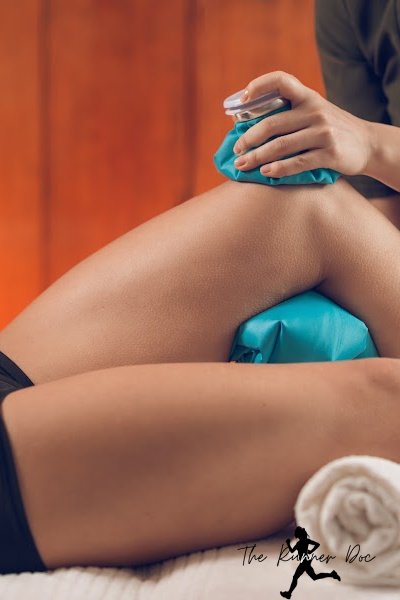
How to control the symptoms of Patellofemoral Pain Syndrome in Runners
Pain and swelling should be controlled with soft tissue work, ice, and compression either at home or by a Physical Therapist.
There is some limited research supporting kinesiotape for Runner’s Knee. However, keep in mind that K-tape is not strong enough to actually produce a mechanical change in the body. Instead, the elasticity of the tape is providing proprioceptive cues to the brain that then alerts the body to better control the movement of the knee. So while it may help to reduce pain and also provide a placebo effect, it won’t give any lasting biomechanical changes to the joint. (PMID: 24311602)
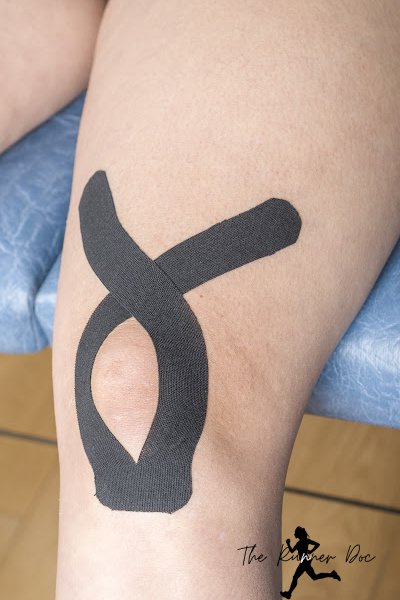
Physical Therapy to Fix Runner’s Knee
Limiting the symptoms is great and all but how do we actually Fix Runner’s knee? Typically, the first step is with the glutes. I don’t care if you are a knee, back, ankle, or hip patient. I’m going to give you glute work. The glutes are your base of support (and hips for that matter) for most of your body. I think they are more important even than the “core” muscles at providing stability for the body. There, I said it.
If you want to talk about the “gold standard” for treating and fixing Patellofemoral Pain Syndrome? Then Gluteal activation, strengthening, and dynamic alignment training are it. Side note here, I hate using the word alignment, thanks to some professions it has been blown way out of line for what it is. But here it is appropriate due to the fact that muscle imbalances, either due to lack of mobility or strength, cause the femur to rotate and not “align” properly under the patella as it should.
Physical Therapy Exercises for PFPS
- Hip CARs
The Hip CAR (controlled articular rotation) is the first place to start when working on hip mobility and control. It helps to ensure you are maintaining and strengthening your hip joint throughout the full range of motion available to it. The intent of the exercise is to challenge the hip at the end ranges to make sure we have full control throughout the range.
How to Perform a Hip CAR
Start by finding a good base of support on one leg and engaging your core. Then, lift the knee up as high as you can without rounding your lower back.
Keep the knee up and move the knee to the outside and then rotate the hip inwards. The foot will come up to be in line with the knee. Try not to hike your pelvis up at this point.
While keeping the leg up, bring it back behind you. Make sure you aren’t over-arching your back at this point.
Now reverse the movement and return to the start. This is 1 repetition.
hip 90/90 mobility
This is my second favorite way to work on hip mobility and honestly, if you only did two hip mobility exercises it would be these two. However, we won’t get into that today.
The focus of the 90/90 stretch is to work on the rotation of the hips instead of the full range of motions available in the hip. Remember that during this stretch the angles matter. Make sure you are truly at 90/90, not 75/85, etc.
How to do the 90/90 Stretch for Runners
Sit on the floor and bend one leg in front of your body with your hip rotated out. Position it so your lower leg and knee are resting on the ground. Your leg should form a 90-degree angle, and your ankle should be neutral so your foot is pointing straight.
Position your other leg beside you with your hip rotated inward and your shin and ankle on the ground. Bend your knee so your leg forms a 90-degree angle. Your back knee should be in line with your hip, and your ankle should be neutral.
Try to keep your back straight and resist the urge to bend to one side. If this is too much then grab a book or yoga block to put your hand on instead of the ground. Think about sitting into both hips equally and easing the lifted hip straight down toward the ground.
Keeping your core engaged you will then rotate and switch the positions of the legs.
Clamshells
These are a little controversial and there are many different variations. I like to keep it simple and go with the basics to start with. It not only helps with the strengthening of the glutes but also with mobility. You will find that you are able to go through a different range of motion on one side versus the other. That’s because your controlled mobility is different on one side compared to the other. Especially if you are having pain.
How to do the clamshell properly.
Start by laying on your side on a firm surface. Next, keep your heels together and your hips stable. Make sure your heels, hips, and shoulders form a straight line. I like to have people (even myself) lie with their back against the wall to keep things in line and also add some isometric hip extension to focus on the correct muscles when going through the motion.
Next, lift your top leg 3 – 4 inches while maintaining that contact of your ankles and ensuring that your HIPS ARE NOT ROTATING. If your hips rotate or move, decrease the range of motion you are performing.
McGill Airplane
This is one of those gold mine exercises. The Airplane has been promoted by Dr. Stuart McGill for a few years now for back pain patients. However, I think they are essential for runners.
These are multi-beneficial. The airplane not only works on active mobility but also on stabilization and control of the hips and core. This is going to be a must for injury prevention for runners. This is exactly what we need to focus on for Runner’s Knee rehab and prevention.
To do these. Start by assuming a single leg stance and lock your ribcage down by bracing your core.
Next, bend your body forward over your stance to a point you can hold without losing balance (this does not need to be a parallel chest position to the ground).
Finally, rotate your torso in towards your stance leg (hip internal rotation) followed by rotating away from the stance leg (hip external rotation). A cue that helps some is to think about moving your belly button towards your stance leg and then out away to the side.
Kickstand Deadlifts
I like to start with the kickstand version to give you a little more support before moving onto the full single leg deadlift. Single leg activities always come before double leg to really retrain the muscles in the hips to support and move properly.
Stand with your feet hip-width apart.
Place one foot a foot-length in front of the other, toe on the floor, so your stance is staggered. You’ll be working your front leg.
Hinge at your hips to lower your body. Push your butt far back and keep your back flat. Y
Keeping your core tight, push through your front heel to stand up straight. Keep your hands close to your shins as you raise up. Eventually, you will have dumbbells in your hands.
Pause at the top and squeeze your butt. That’s 1 rep. Repeat 10 times on each side
Foot Doming or Arch Lifts
This exercise has also been called the short foot exercise targets the small muscles that support the arch on the inside of the foot. This helps with good arches in the feet as well as keeping the ankle in alignment and supporting the other joints in your legs.
Start by sitting in a chair with your foot flat on the ground and your toes pointed forward.
Next, while keeping the toes flat on the ground slide the front of the foot back along the floor toward the heel.
Hold the short foot position for 5-10 seconds.
Relax and repeat 10 times on each foot.
To make this one more complicated you can do it in a standing position. However, before moving to standing make sure your form is great while sitting and you are getting the movement down with perfection
How Long Will I Have Runner’s Knee?
When caught early and treated appropriately a runner should be back to pain-free performance in 2-4 months. However, this time frame is dependent on how soon PFPS was treated and how accurately the treatment plan was followed.
A recent study found that in adolescents, Runner’s knee is a non-self-limiting condition. Meaning it won’t get better over time. In fact, if left untreated it will get worse and more debilitating. (PMID: 29324820)
The potential for quick and effective recovery decreases exponentially the longer someone waits for the pain to go away. I have seen it time and time again with all populations, you put off treatment because you hope that it will just go away on its own. Eventually, you still end up requiring physical therapy and now recovery takes twice as long (if not more) than it would have if you addressed it at the onset.
Final thoughts on Preventing and Treating Runner’s Knee
The stats show that 1 in 4 runners will experience Runner’s Knee at some point in their career. With that high of a stat, you really can’t not want to do something to prevent it in the first place! These exercises for preventing and treating patellofemoral pain syndrome in runners are really the best thing you can do as a runner if you are concerned about Runner’s Knee.
– – – Ad – – –
Have you been struggling to get a strength training program scheduled to go with all your running? Do you know that you need to strengthen in order to prevent injury as well as improve your times?
Check out my Run Strong Program.
A strength program designed by a Physical Therapist specifically for runners. It is customizable and repeatable to use over and over again and continue to see progress!
The phases of the program are periodized to match and complement any running training program from short distances to marathons and beyond!
The best part? You get lifetime access to it for only $30.
The only remaining question is….what are you waiting for?! Help yourself become the best and strongest runner you can by adding in strength training today!
– – – End of Ad – – –
Related articles to Preventing Runner’s Knee H3
10 Ways to Prevent Injuries in Runners
How to Eat when you are an Injured Runner
AFFILIATE DISCLOSURE
As an Amazon Associate, I earn from qualifying purchases. This post may contain affiliate links. If you use these links to buy something we may earn a commission. The Site may contain links to affiliate websites, and we receive an affiliate commission for any purchases made by you on the affiliate website using such links.
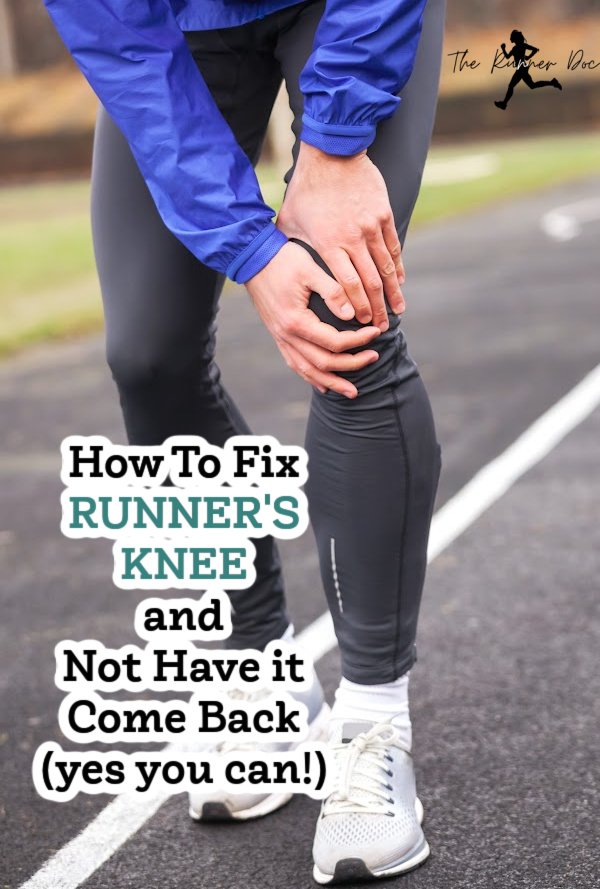
How to Prevent and Treat Runner’s Knee
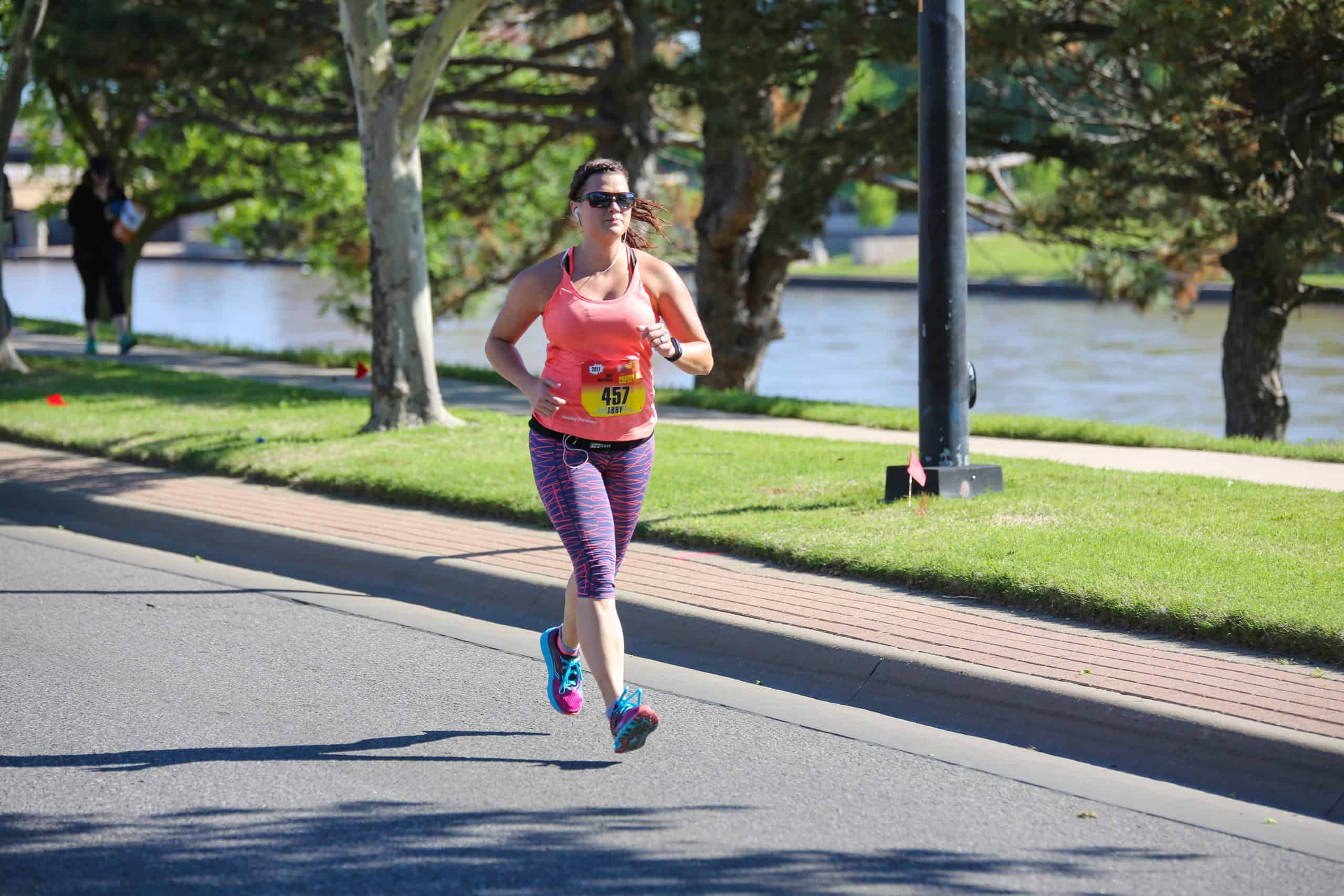
Dr. Abby Siler, PT, DPT is a Physical Therapist with 10 years of experience in a variety of settings. She has spent the majority of her time treating athletes in orthopedic clinics and worker’s compensation cases. She is a runner herself for the past 15 years and a lifelong athlete. Dr. Abby loves to teach runners how to stay injury free and out of her clinic.
